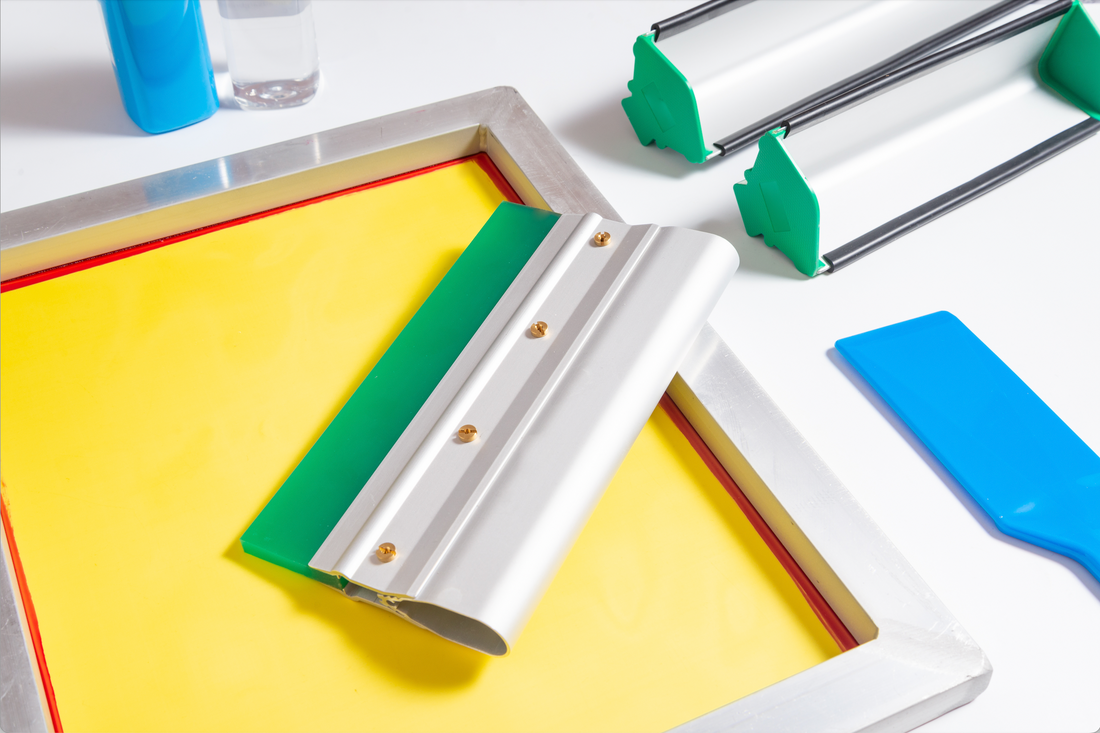Introduction to Screen Printing
Screen printing is a popular technique used to transfer images and designs onto various materials like fabric, paper, wood, and glass. It involves creating a stencil on a mesh screen and then pressing ink through the mesh onto the surface below. Whether you're a beginner or an experienced printer, investing in a quality screen printing kit can make your projects easier and more efficient.

Below we cover the financial benefits of investing in a screen printing kit
Why Invest in a Screen Printing Kit
Cost-effectiveness
Purchasing a screen printing kit is a cost-effective way to get started with this artistic process. Instead of buying individual components separately, you can save money by acquiring everything you need in one package.
Flexibility and Creativity
A screen printing kit offers you the flexibility to create custom designs on a variety of materials. You can experiment with different inks, techniques, and surfaces to produce unique and creative projects.
Quality and Durability
Investing in a quality kit ensures that your prints are of the highest quality and last for a long time. High-quality tools and materials can also improve the overall durability of your projects.

Below we cover the key components of a screen printing kit
Key Components of a Screen Printing Kit
Screen and Frame
The screen is the most critical component of the kit. It holds the stencil and allows ink to pass through onto the material. The frame holds the screen taut, ensuring even ink distribution. When selecting a kit, look for high-quality screens and frames that are sturdy and durable.

Make sure your screen print frames are sturdy and reliable (think quality)
Inks
Inks are available in various types, such as water-based, plastisol, and discharge. Each ink has specific characteristics and works best with certain materials. Ensure that the kit you choose includes a variety of inks suitable for your intended projects.

There are lots of options available for screen print ink.
Squeegee
The squeegee is a vital tool for pushing ink through the screen onto the material. It comes in different sizes and materials, such as wood or aluminum handles and rubber or polyurethane blades. A good kit should include a high-quality squeegee that is comfortable to use and provides excellent ink control.

Screen Print Squeegees comes in different sizes and materials
Emulsion and Scoop Coater
The emulsion is a light-sensitive liquid that's applied to the screen to create a stencil. The scoop coater evenly spreads the emulsion across the screen. A good kit should include both the emulsion and a scoop coater.
Exposure Unit
The exposure unit is essential for creating the stencil on the screen. It uses light to harden the emulsion in the areas where your design will be, leaving the rest of the emulsion to be washed away. Make sure your kit includes an exposure unit that is easy to use and provides consistent results.
Press and Registration System
The press holds the screen and material in place during printing, while the registration system helps you align your design correctly. A quality kit should include a press that is easy to set up and adjust, as well as a reliable registration system to ensure accurate prints.

Choosing the Right Screen Printing Kit
Assess Your Needs
Before purchasing a kit, consider the types of projects you want to work on, the materials you'll be printing on, and your skill level. This will help you narrow down your options and choose a kit that meets your specific needs.
Compare Brands and Reviews
Do your research on the different brands and models available in the market. Read reviews from other customers to get an idea of the pros and cons of each kit. This will help you make an informed decision and select a kit that has been tried and tested by others.
Read "Unveiling the Best Screen Printing Machines for Beginners: Your Ultimate Guide" for timely information on various screen print machine options.
Consider Your Budget
Screen printing kits are available at various price points. Determine how much you're willing to spend and look for a kit that offers the best value for your money, without compromising on quality and features.
Note that kits can start in the low hundreds of dollars and go all the way up to the tens or hundreds of thousands of dollars. Of course you can start small and when your screen print business takes off you can upgrade!
If you want to outsource your screen printing needs please consider MerchBooth.com.
Caring for Your Screen Printing Kit
Proper care and maintenance of your screen printing kit will ensure its longevity and optimal performance. Clean your screens and tools thoroughly after each use and store them in a cool, dry place. Regularly inspect your equipment for wear and tear and replace any damaged components as needed.
Expanding Your Screen Printing Business
As your skills and experience grow, you may want to expand your screen printing business. Consider investing in additional equipment, such as a conveyor dryer or a larger press, to increase your production capacity and offer a wider range of services.

It's ok to dream! The above picture highlights a premium automatic screen printing machine.
Conclusion
Investing in the right screen printing kit is essential for producing high-quality prints and making your projects more enjoyable. By considering your needs, comparing brands and reviews, and taking care of your equipment, you can ensure that you get the most out of your investment.
FAQs
1. Can I use screen printing kits for both paper and fabric?
Yes, screen printing kits can be used for both paper and fabric. However, you may need to use different inks depending on the material you're working with.
2. Can I create multicolor designs with a screen printing kit?
Yes, you can create multicolor designs by using multiple screens and inks. Each color requires a separate screen and stencil.
3. How long does it take to learn screen printing?
The learning curve for screen printing varies depending on your experience and artistic abilities. With practice and patience, most beginners can become proficient within a few weeks to a few months.
4. Is screen printing environmentally friendly?
Screen printing can be environmentally friendly if you use eco-friendly inks and materials, and properly dispose of waste products.
5. Can I use a screen printing kit to print on curved surfaces?
Screen printing on curved surfaces can be challenging and may require specialized equipment or techniques. It's best to start with flat surfaces before attempting to print on curved items.
Equipment
Unveiling the Best Screen Printing Machines for Beginners: Your Ultimate Guide
How to Choose the Right Screen Printing Press for Your Business: A Comprehensive Guide
The Ultimate Screen Printing Kit Buying Guide
Ink
A Beginner's Guide to Screen Printing Inks
Why Water-Based Screen Printing Ink is the Future
The Benefits of Using Discharge Screen Printing Ink
Screen
How to Choose the Right Screen Printing Mesh for Your Project
Everything You Need to Know About Screen Printing Frames
The Ultimate Guide to Screen Printing Emulsion
Technique
7 Essential Screen Printing Techniques for Beginners
How to Screen Print on Fabric: A Beginner's Guide
The Basics of Screen Printing on Paper
Service
Get Custom Screen Printing for Your Business or Event
Find Screen Printing Services Near You
The Best Online Screen Printing Services for Your Business
Supplies
The Essential Screen Printing Supplies You Need

